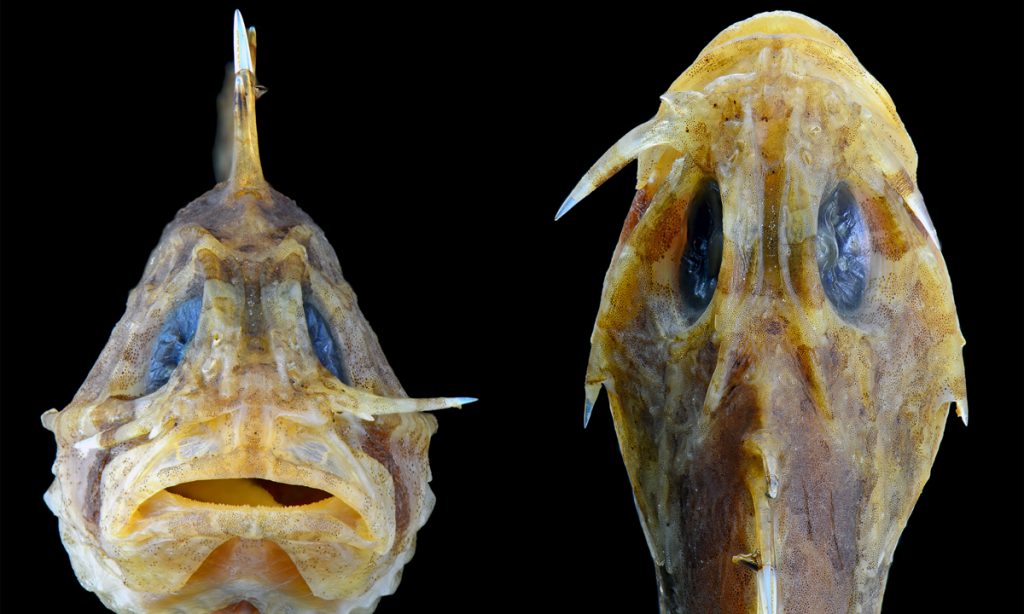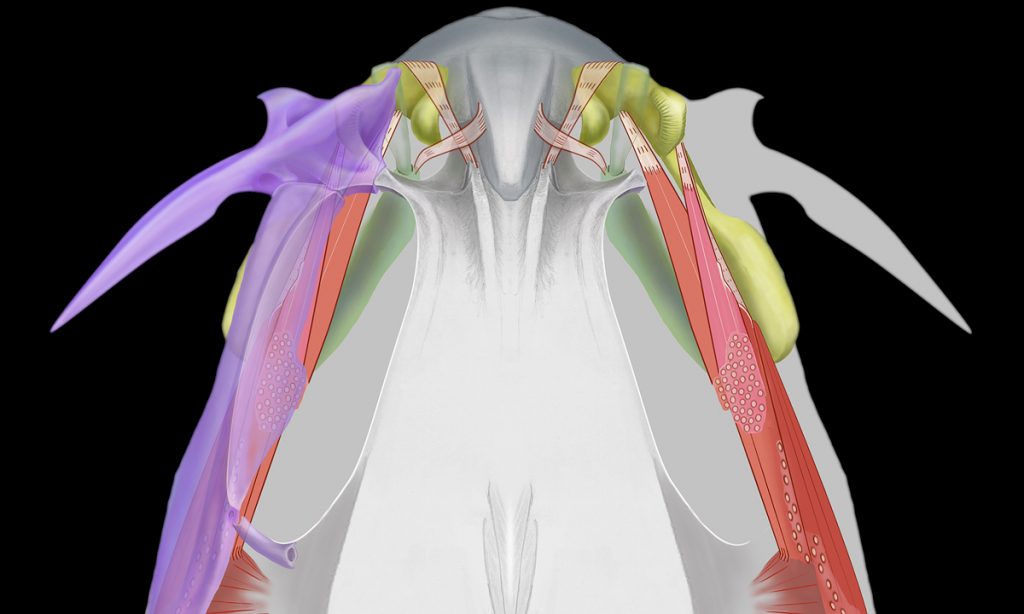
Researchers at the University of Kansas discovered that stonefish — a group of fish common in Indo-Pacific coastal waters — have a horrifying defense mechanism: a retractable switchblade in either cheek.
Called “lachrymal sabers,” the blades are controlled by overdeveloped bones and muscles below the eyes and extend outwards from the cheek when activated. Though stonefish have been well-researched, this unusual mechanism went undiscovered until one of the study’s authors happened upon it while dissecting his former pet stonefish.

Stonefish, which are widespread, are mostly marine creatures, though they are known to live in rivers. Named for their mottled grey rock-like color which provides excellent camouflage, they typically hover motionless on the seafloor or river bed, waiting for prey to happen by.
The researchers hypothesize that the lachrymal sabers are a defense mechanism to ward off predators.
“If you find pictures of these stonefishes in the mouths of other things, the lachrymal saber is always locked out,” the study’s lead author William Leo Smith said in a statement.

The discovery only makes the already deadly carnivorous stonefish more fearsome. The fish also have intimidating, needle-like spikes for dorsal fins, which they raise from their backs when they’re threatened, or when prey happens by. Those spikes contain some of the most powerful venom of any creature; a neurotoxin capable of killing an adult human in a very short period of time.
We’re not sure “face knives” tops the list of “reasons not to mess with stonefish,” but it’s probably in the top three.




